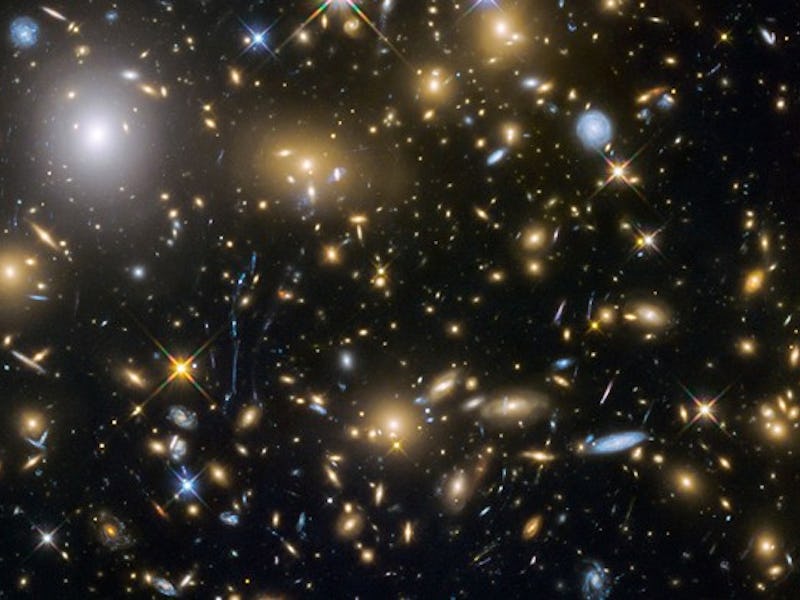Newly Discovered Massive Ancient Galaxies May Shed New Light on Dark Matter
This discovery challenges what we know about the early universe.

Combining the resources of multiple observatories around the world and in space, an international team of astronomers has discovered a treasure-trove of previously unknown ancient massive galaxies that date back to the first 2 billion years of the universe.
Details of the discovery, which is the first of its kind, appear in the journal Nature on Wednesday. Such an abundance of this type of galaxy — 39 to be exact — defies current models of the early universe, which vastly underestimated their existence. Moreover, these galaxies are intimately connected with the distribution of dark matter and supermassive black holes.
“This is the first time that such a large population of massive galaxies was confirmed during the first 2 billion years of the 13.7-billion-year life of the universe. These were previously invisible to us,” said first author Tao Wang, Ph.D., a research associate at the University of Tokyo’s Institute of Astronomy, in a press release. “This finding contravenes current models for that period of cosmic evolution and will help to add some details, which have been missing until now.”
The timeline of the universe.
Looking into deep space is, in essence, looking back in time. Because of the mind-boggling distances involved and the time it takes for that light to reach us, what we see of distant stars and galaxies today is actually how they looked millions or billions of years ago. The Hubble Space Telescope, therefore, acts like a time machine that offers scientists unprecedented access to the previously unseen universe.
However, even it can’t see every piece of the giant cosmological puzzle. That’s where the Earth-based telescopes came into play.
The researchers’ suspicions were aroused by data they received first from the Spitzer Space Telescope. Astronomers wanted to observe phenomena that they long suspected may exist, but which Hubble couldn’t detect. It took more data from the Very Large Telescope, in the Atacama Desert of northern Chile, before they finally turned to the Large Millimeter/submillimeter Array (ALMA,) also in Chile, one of the most advanced scientific installations in the world.
“The light from these galaxies is very faint with long wavelengths invisible to our eyes and undetectable by Hubble,” Kotaro Kohno, Ph.D., a professor of astronomy at the University of Tokyo and co-author on the paper, said in the statement.
Costing $1.4 billion, ALMA is the most expensive ground-based telescope in operation
As the universe expands, light passing over a long distance becomes stretched, so visible wavelengths become longer, eventually turning into infrared. So, despite their enormous size, the light from these newly observed galaxies is not only weak, but also stretched out. The amount of stretching can be measured precisely, though, allowing astronomers to calculate how far away they are and how long ago they emitted their light.
“The more massive a galaxy, the more massive the supermassive black hole at its heart. So the study of these galaxies and their evolution will tell us more about the evolution of supermassive black holes, too,” said Kohno. “Massive galaxies are also intimately connected with the distribution of invisible dark matter. This plays a role in shaping the structure and distribution of galaxies.”
Previous models of the early universe had not accounted for the possibility that so many of these massive galaxies existed, so this discovery could profoundly shake up the field of astrophysics.
“Theoretical researchers will need to update their theories now,” added Kohno.
With this discovery, the team has reached the limits of what existing telescopes can reveal about these distant galaxies.
“These gargantuan galaxies are invisible in optical wavelengths so it’s extremely hard to do spectroscopy, a way to investigate stellar populations and chemical composition of galaxies. ALMA is not good at this and we need something more,” said Wang. “I’m eager for upcoming observatories like the space-based James Webb Space Telescope to show us what these primordial beasts are really made of.”
And so are we.